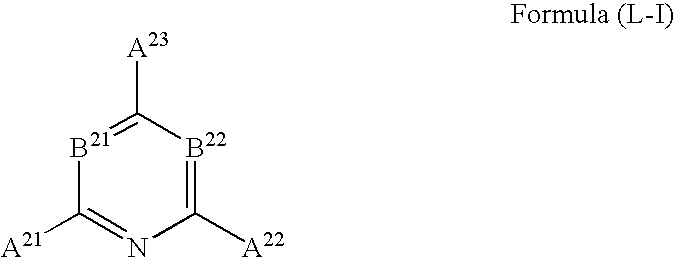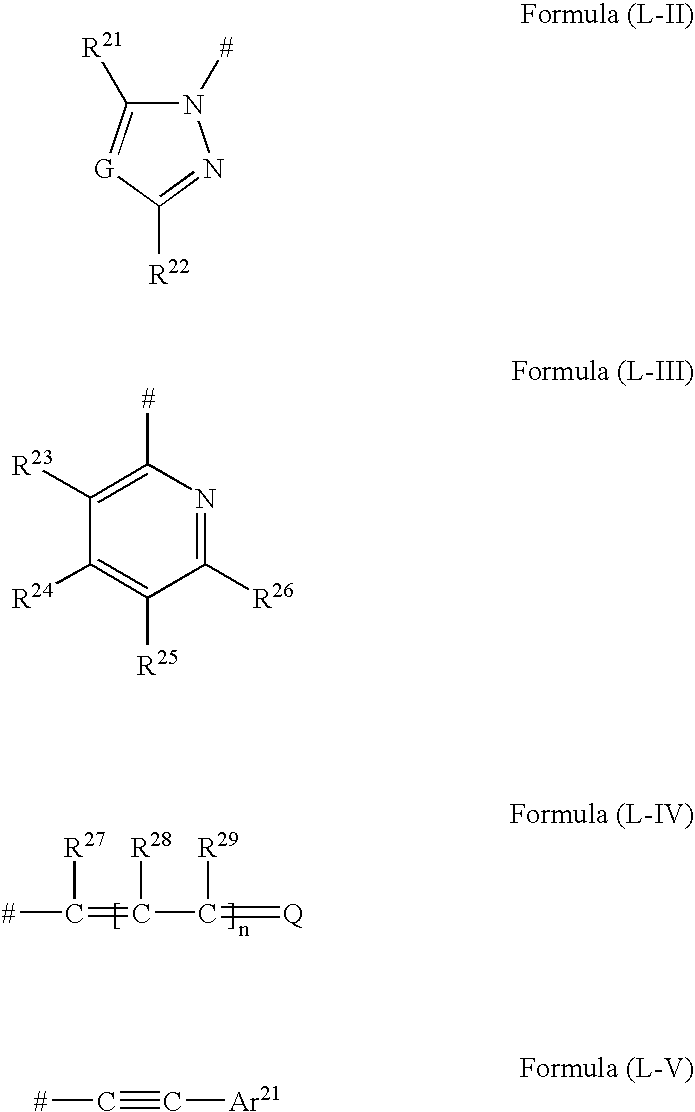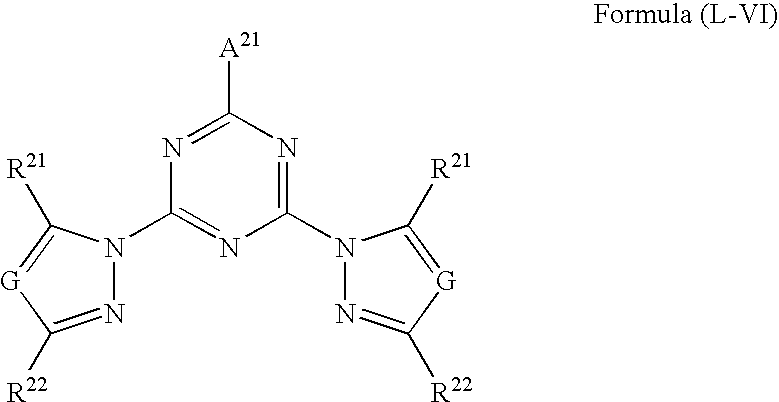Fluorescent polymer fine particle, method for forming thereof, fluorescence detection kit, and method for detecting fluorescence
a technology of fluorescence and fine particles, applied in the direction of coatings, etc., can solve the problems of insufficient sensitivity, deficiency of absolute sensitivity as a label, errors in judgment, etc., and achieve the effect of high fluorescence intensity and high sensitivity
- Summary
- Abstract
- Description
- Claims
- Application Information
AI Technical Summary
Benefits of technology
Problems solved by technology
Method used
Image
Examples
synthesis examples
Synthesis of Exemplary Compound 4
[0189] For example, the Exemplary compound 4 may be synthesized by a following process.
[0190] 18.4 g of cyanuric chloride are dissolved in 100 mL of dimethylacetamide, and 69.2 g of 3,5-dimethylpyrazole are added at the room temperature. Then the materials are reacted for 2 hours at a reaction temperature of 80° C.
[0191] After cooling, the reaction liquid is poured into water, and the deposited crystals are collected by filtration and recrystallized from dimethylformamide to obtain (LP-1-1) shown below. Obtained amount: 21.0 g, yield: 57.9%.
[0192] NMR spectral data (in deuterized chloroform): 6.11 (3H, s), 2.81 (9H, s), 2.33 (9H, s).
[0193] 419 mg of 6-chloro-5-cyano-1,3-diethyl-2-methyl-1H-benzimidazolium p-toluenesulfonate and 363 mg of the aforementioned compound (LP-1-1) are suspended in 8 mL of dimethylsulfoxide, and, with an addition of 0.5 mL of tetramethylguanidine, are reacted for 30 minutes at 80° C.
[0194] After cooling, crystals dep...
example 1
Synthesis of Fluorescent Polymer Fine Particles
[0231] A radical-polymerizable macromonomer, represented by a following formula and having an amino group at a terminal end, was synthesized according to the method described in Anal. Chem., 2003, 75, pp. 6124-6132. A number-average molecular weight based on a GPC measurement was 7,000.
[0232] Styrene, the macromonomer (5 mol % relative to 1 mol % of styrene) and 1,4-divinylbenzene (2 mol % relative to 1 mol % of styrene) were heated, in the presence of a radical generator V-65 (trade name, manufactured by Wako Pure Chemical Co.) (2 mol % relative to 1 mol % of styrene), in ethanol / distilled water=4 / 1 (volume ratio) for 6 hours at 70° C. to execute a radical polymerization. The polymer solid in the reacted substance was separated by filtration, and the filtrate was purified by a dialysis with distilled water for one day (fractionated molecular weight=12,000-14,600) so as to obtain a dispersion of fine particles having amino groups on...
examples 2 to 5
[0240] Fluorescent polymer fine particles used in Examples 2 to 5 were prepared in the same manner as in Example 1, except that the ligand of the Exemplary compound 4 was replaced respectively by ligands of the Exemplary compounds 2, 6, 11 and 17. Antibody-combined particles of Examples 2 to 5 using each of these fluorescent polymer fine particles were then prepared in the same manner as in Example 1 and subjected to a fluorescence measurement for each compound. As a result, there were observed delayed fluorescence, each of which was dependent on the concentration of the fluorescent polymer fine particles., and, when the fluorescence measurement was repeated after a standing for 1 week in an environment of 35° C., the fluorescence intensity remained unchanged, thus it was confirmed that the dispersions of the fluorescent polymer fine particles combined with the antibody of Examples 2 to 5 are a fluorescence detecting reagent having an excellent storability.
PUM
| Property | Measurement | Unit |
|---|---|---|
| wavelengths | aaaaa | aaaaa |
| decomposition temperature | aaaaa | aaaaa |
| decomposition temperature | aaaaa | aaaaa |
Abstract
Description
Claims
Application Information
 Login to View More
Login to View More - Generate Ideas
- Intellectual Property
- Life Sciences
- Materials
- Tech Scout
- Unparalleled Data Quality
- Higher Quality Content
- 60% Fewer Hallucinations
Browse by: Latest US Patents, China's latest patents, Technical Efficacy Thesaurus, Application Domain, Technology Topic, Popular Technical Reports.
© 2025 PatSnap. All rights reserved.Legal|Privacy policy|Modern Slavery Act Transparency Statement|Sitemap|About US| Contact US: help@patsnap.com



